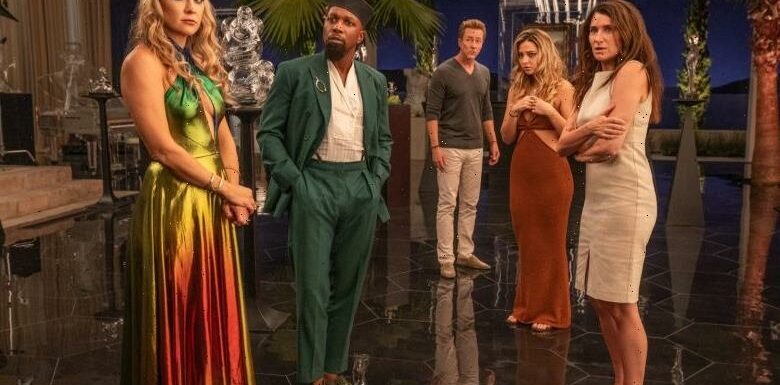
Writer-director Rian Johnson‘s “Glass Onion: A Knives Out Mystery” boasts an impeccably cast comic ensemble that includes Daniel Craig, Edward Norton, Janelle Monáe, Kate Hudson, and Kathryn Hahn, all of whom Johnson credited with bringing great ideas to the film. Not that having a great cast made things easy — to the contrary, the expansive company of actors, combined with limited locations (even if one of them was the architecturally stunning structure that gives the movie its title) made the task of blocking far more difficult than it ever was in one of the action sequences of “Star Wars: Episode VII — The Last Jedi” or “Looper.”
“‘Knives Out’ only had a couple of scenes where everybody was in a room together talking,” Johnson told IndieWire, “and in those scenes, everyone’s sitting down for the most part, which makes it a lot easier. In ‘Glass Onion,’ there were a bunch of scenes where we were in that huge set that we call the atrium, and it’s everybody milling around doing really complicated things and talking to each other. And yeah, it was a fucking nightmare.”
To solve the staging problems, Johnson looked to directors who he felt had perfected the technique and examined how they achieved their effects. “It was a great kind of growth experience because, even more than the first movie, it made me go and take a look at directors who are great at staging like Spielberg, who I think is the modern master of it. Or looking at the way [Orson] Welles creates shapes in the frame using the blocking of his actors, or Michael Curtis — directors who are masters at creating frames with shapes of people very deliberately. As opposed to thinking in terms of cool shots or camera movement, thinking in terms of the tools to create the shape of the frame, which are the bodies in the frame, and how does that reflect the dynamics of the scene?” For Johnson, the key was figuring out how to place actors in the frame in a way that would help serve the needs not only of the relationships but the overall mystery. “We’re layering in quite a bit of information and trying to get you to look at certain moments. How can the blocking help that? It becomes its own game, a complicated, tough game. It was a real challenge.”
You can listen the full discussion above, or subscribe to the Filmmaker Toolkit podcast below.
The Filmmaker Toolkit podcast is available on Apple Podcasts, Spotify, Overcast, and Stitcher. The music used in this podcast is from the “Marina Abramovic: The Artist Is Present” score, courtesy of composer Nathan Halpern.
Source: Read Full Article